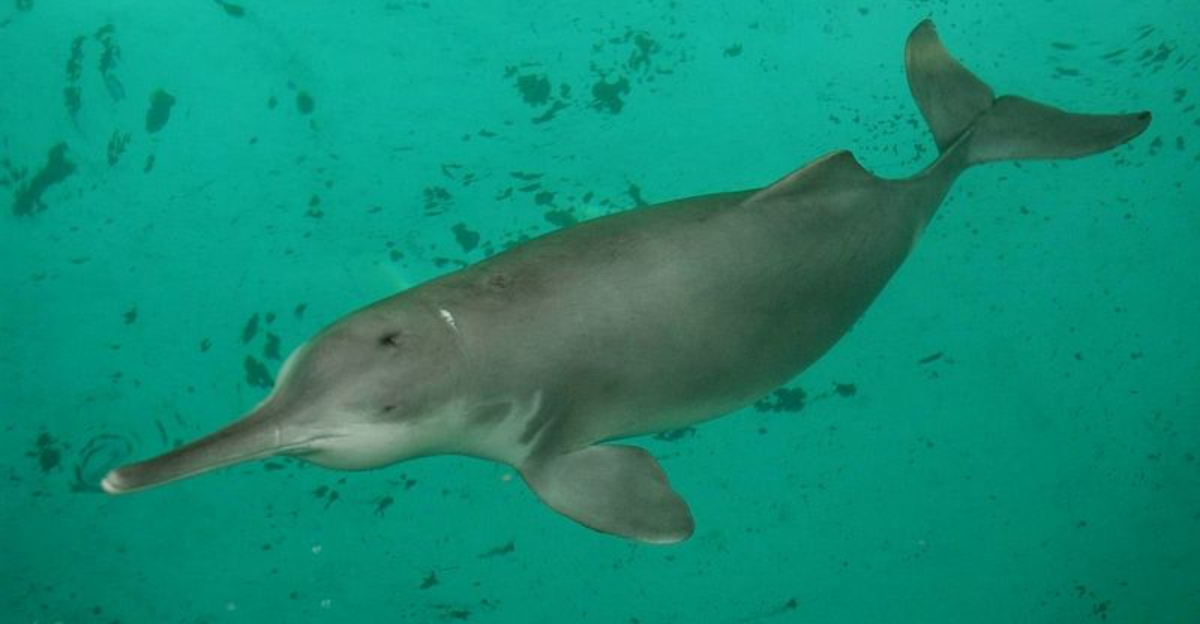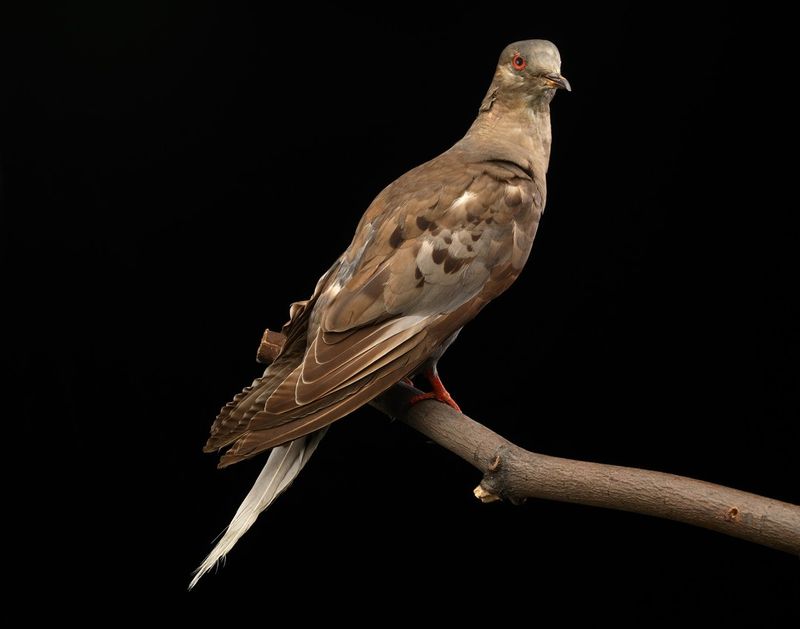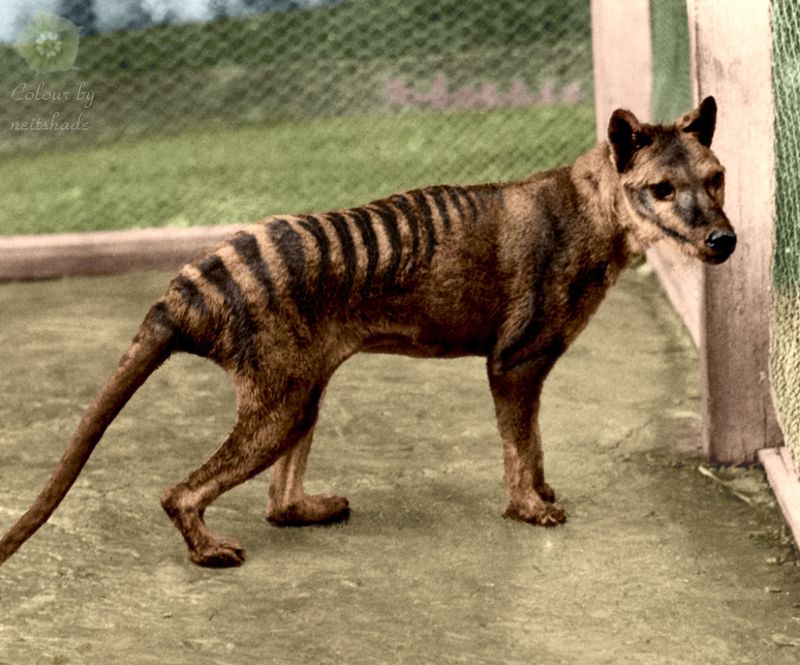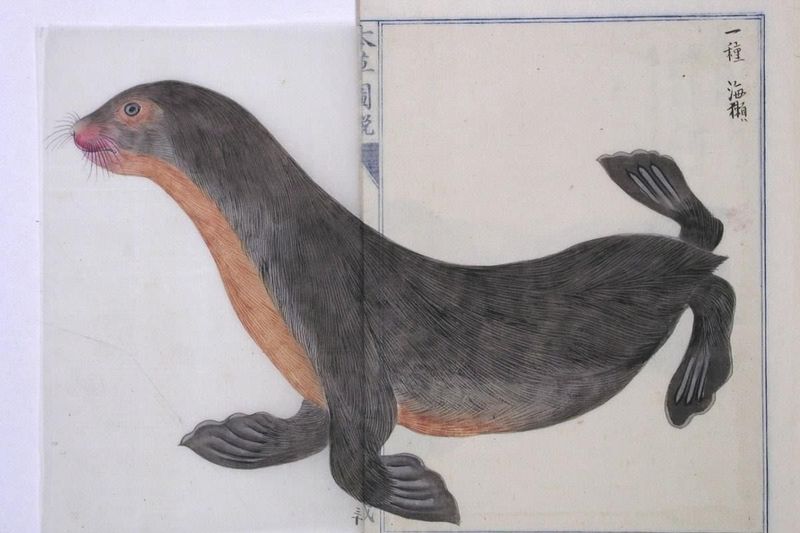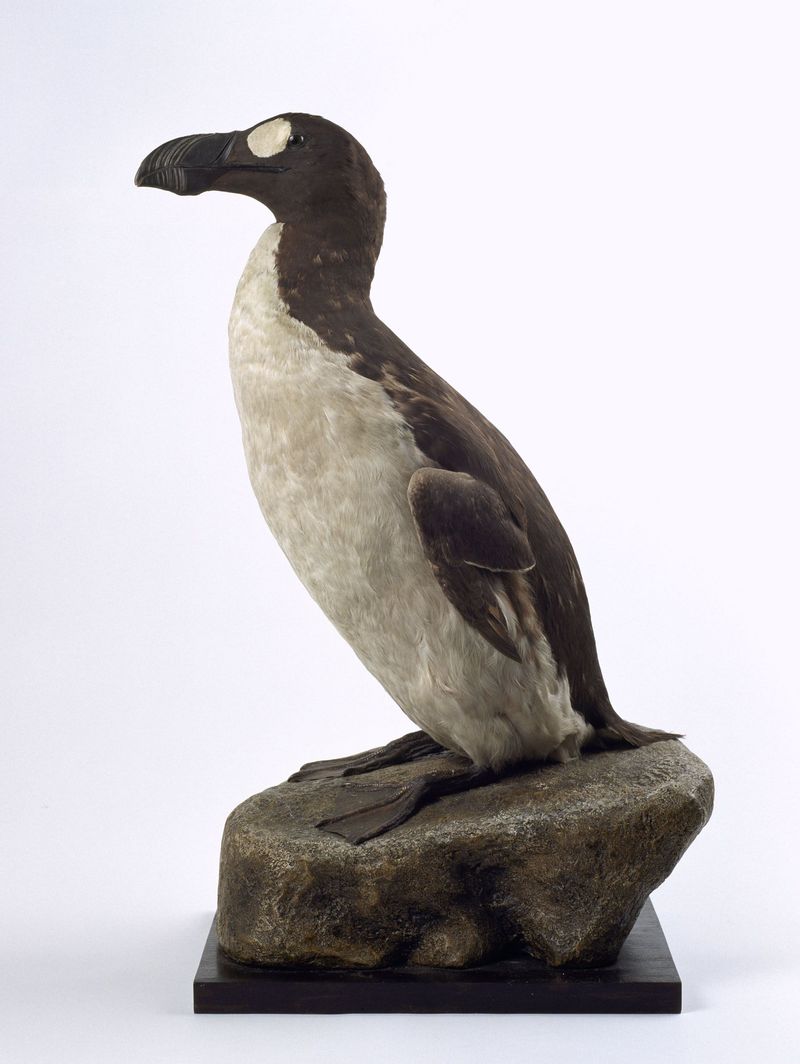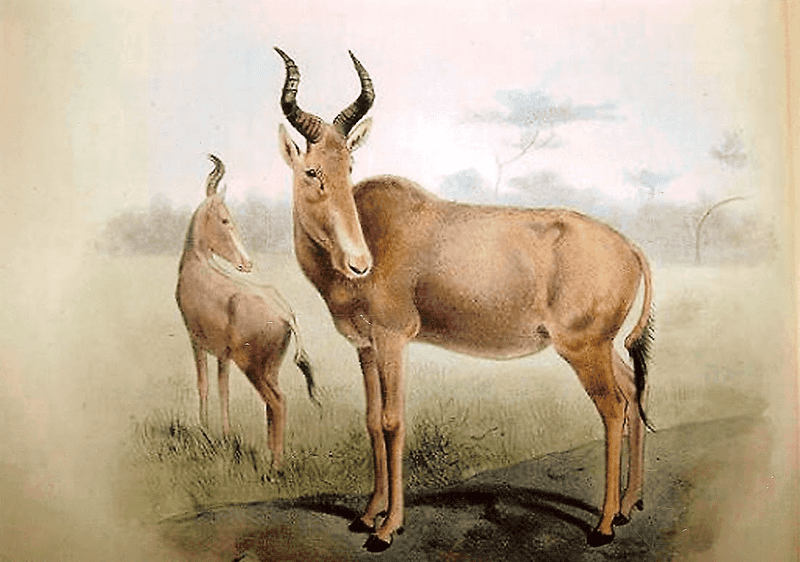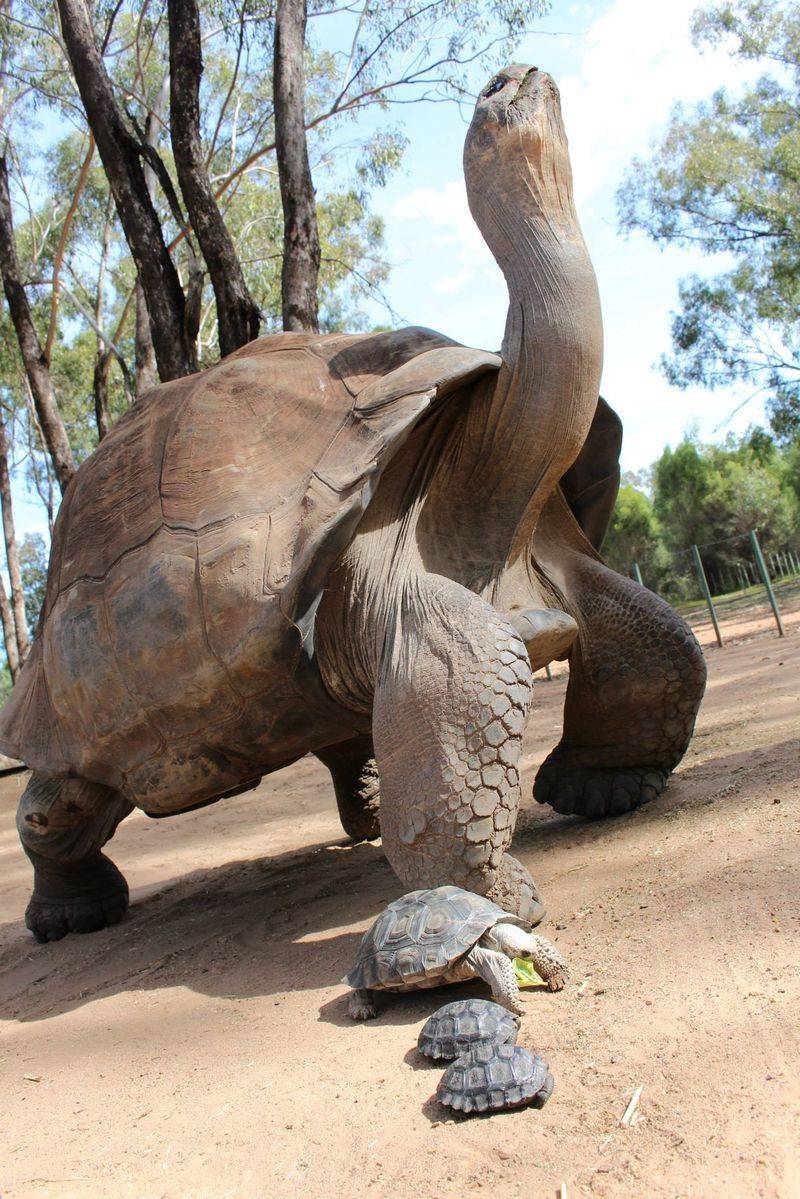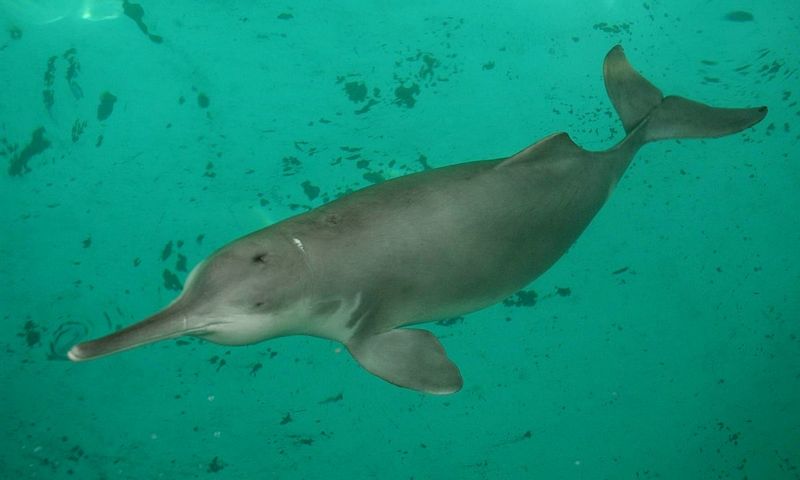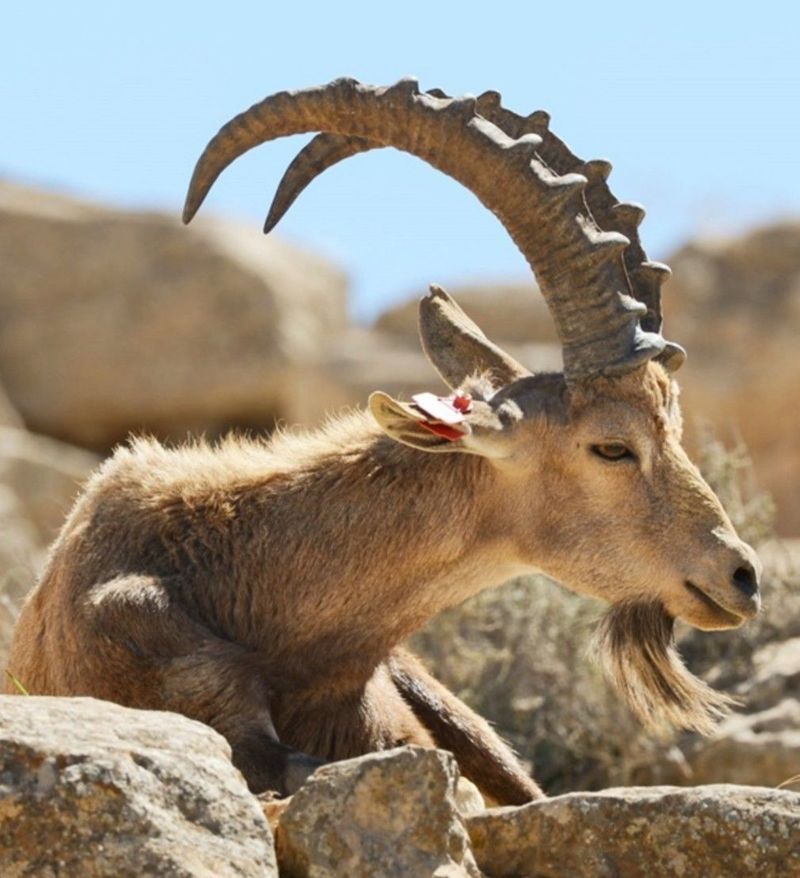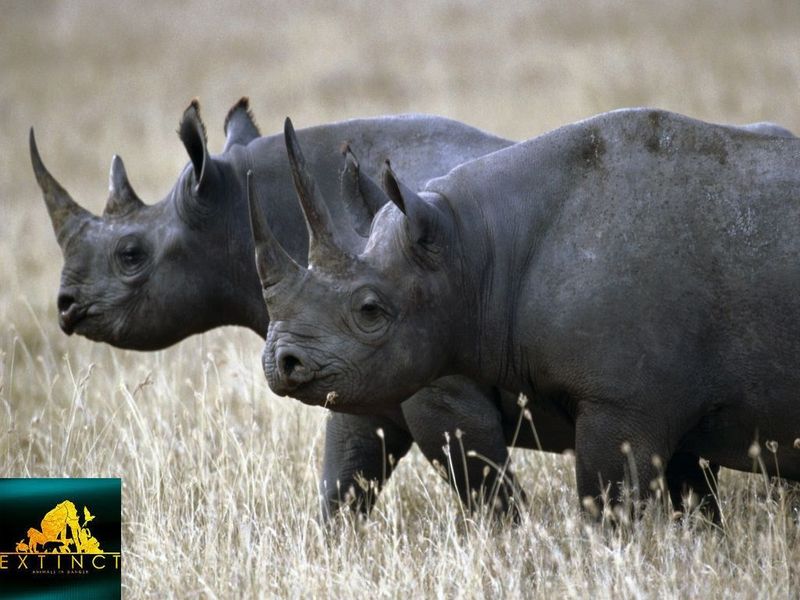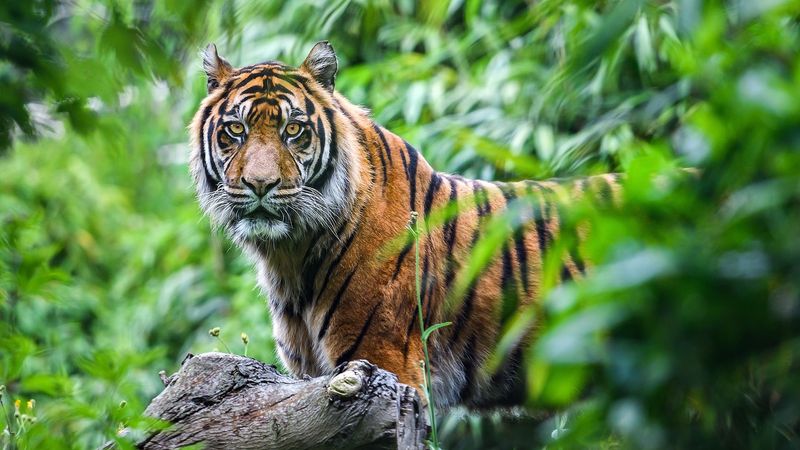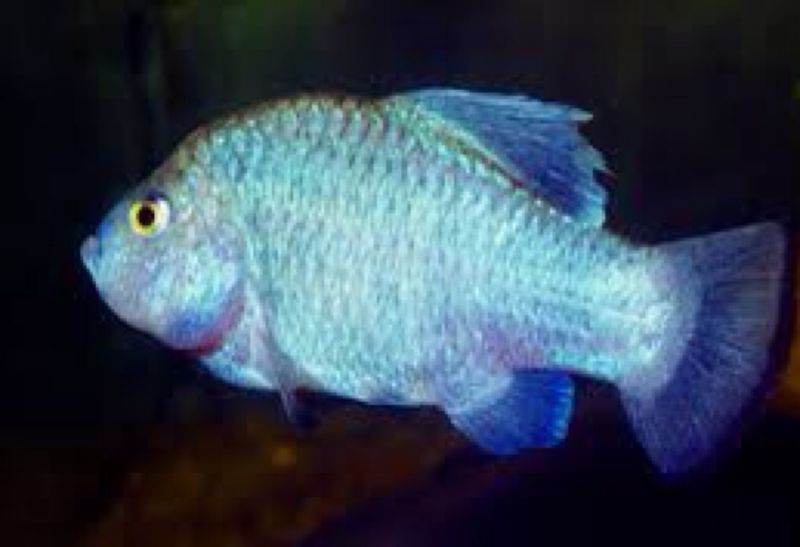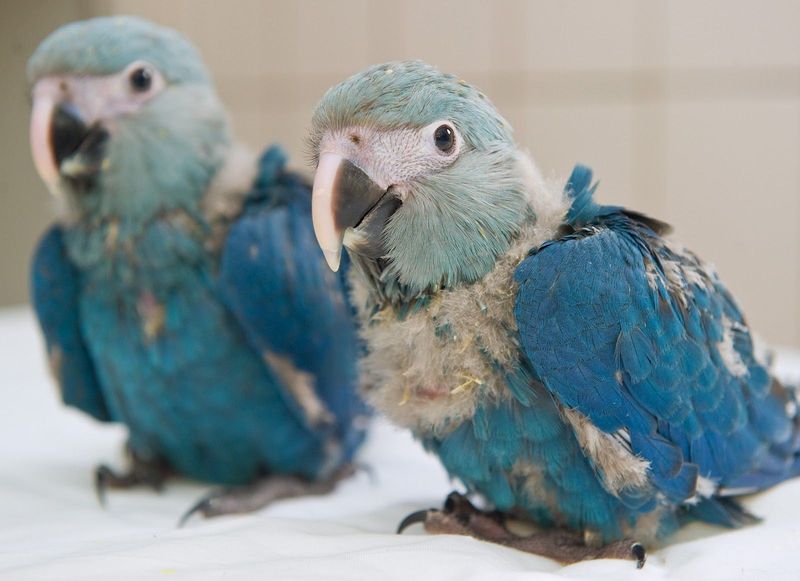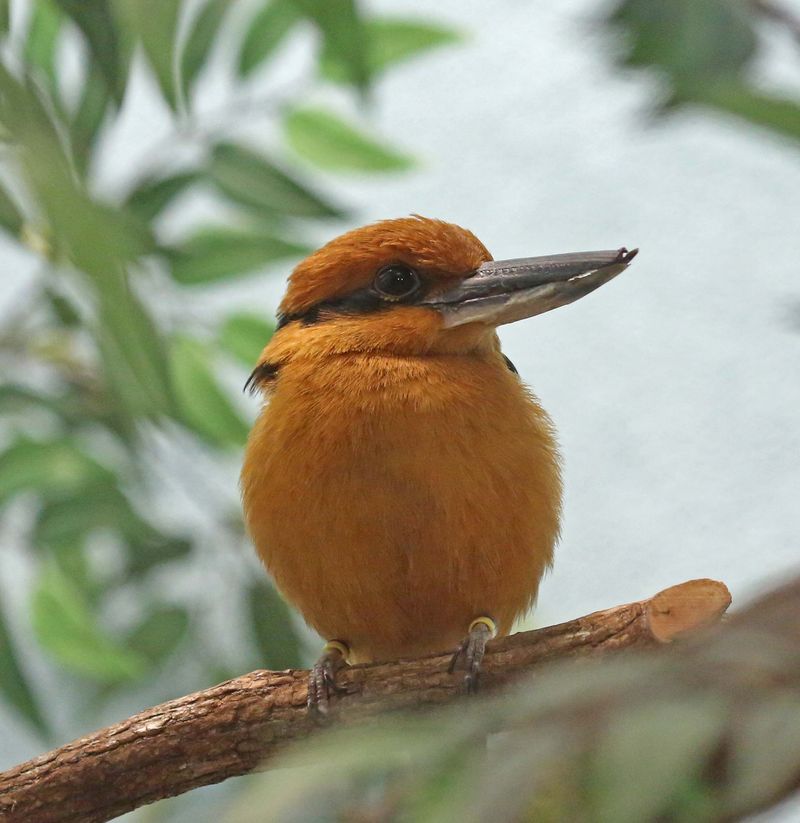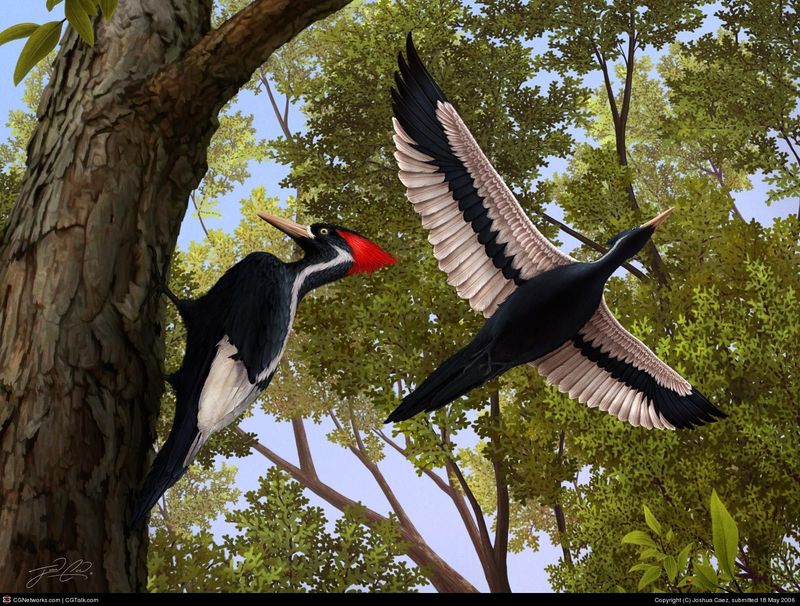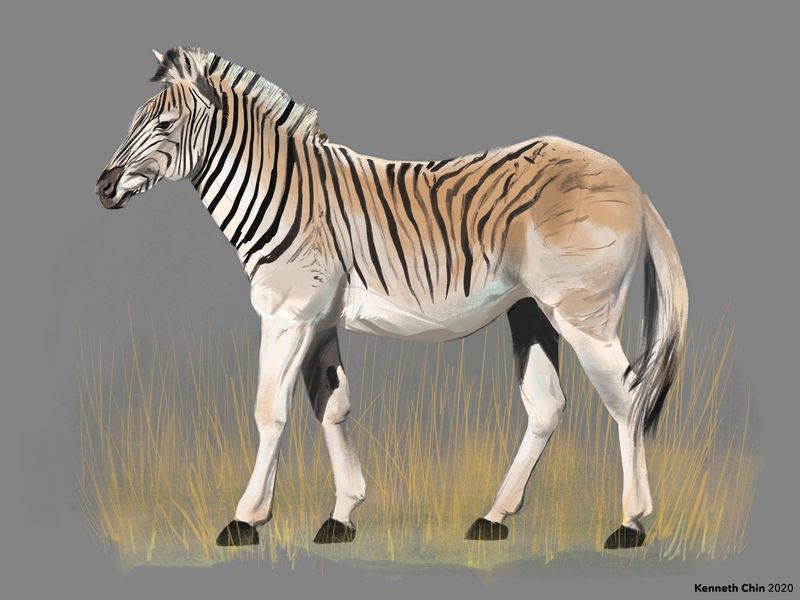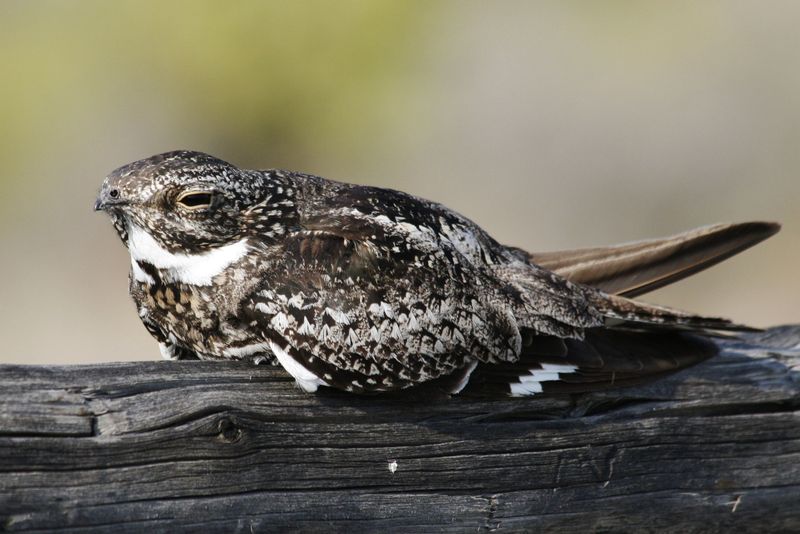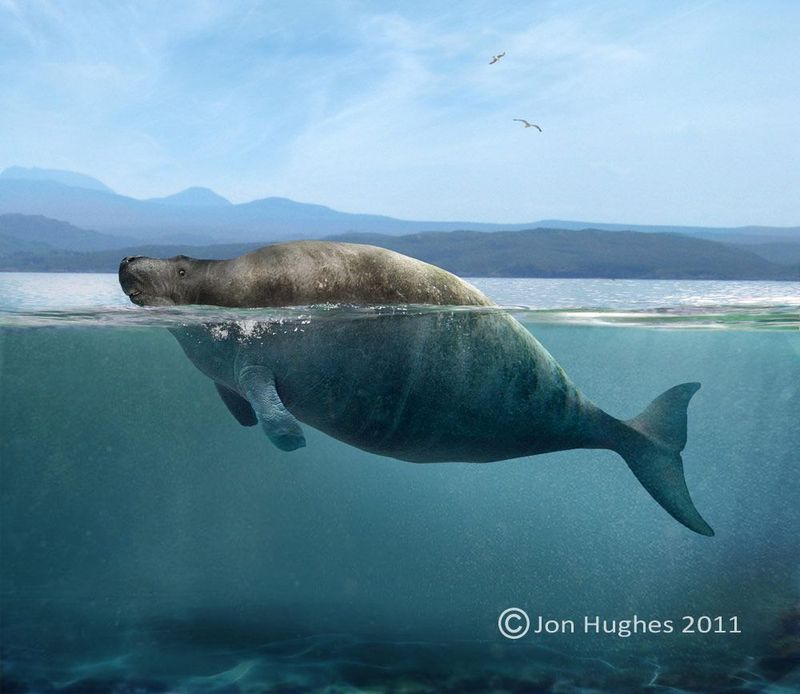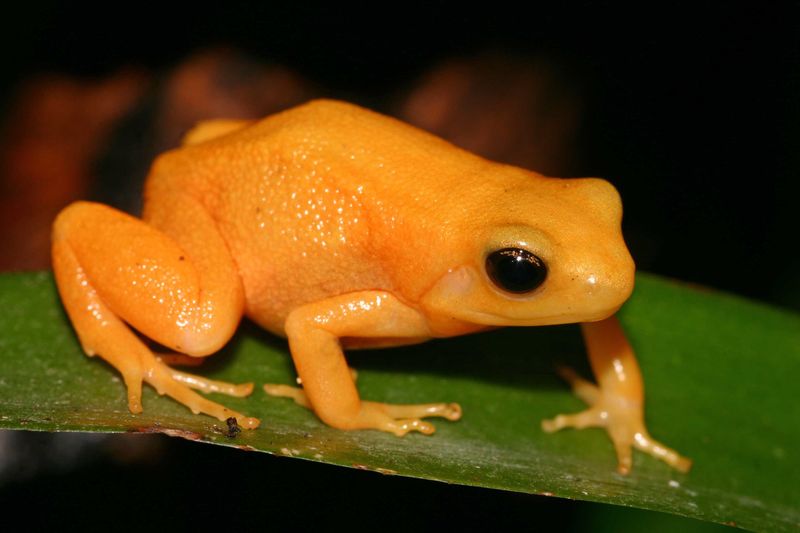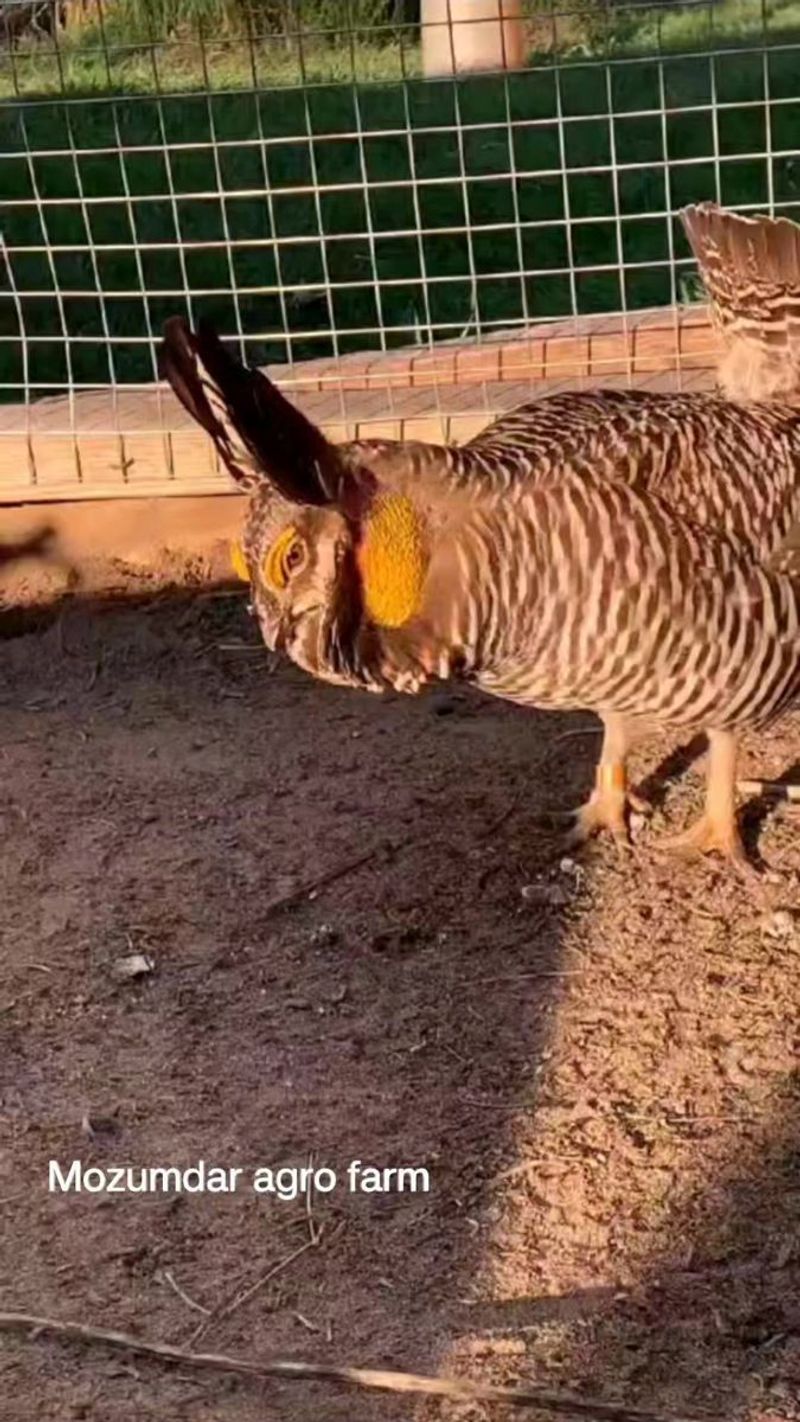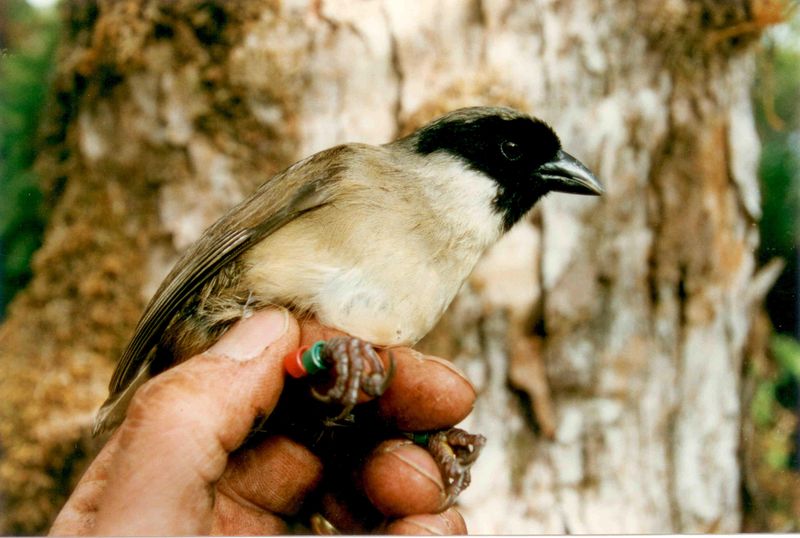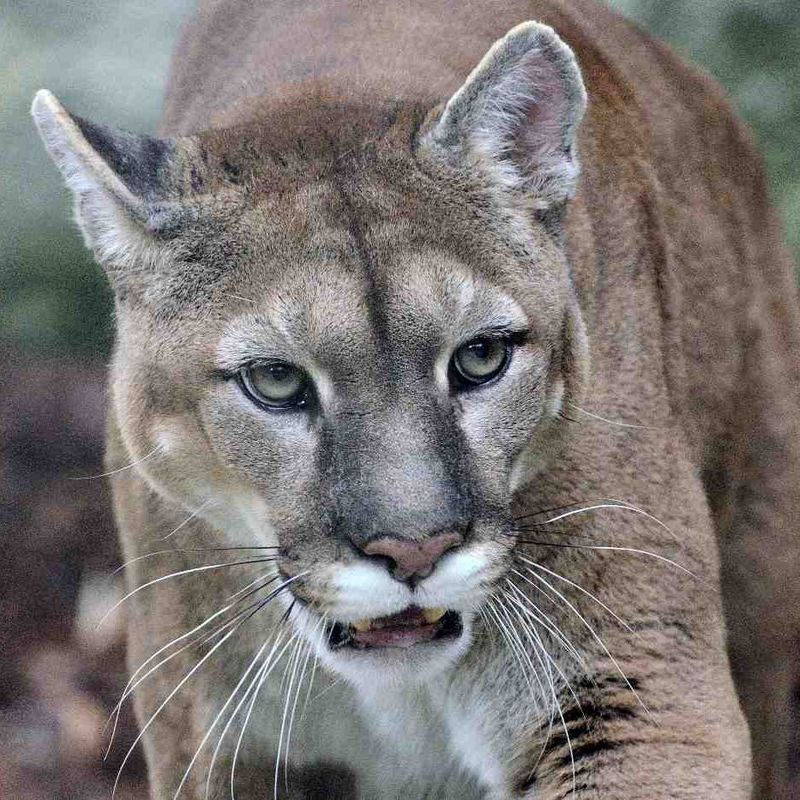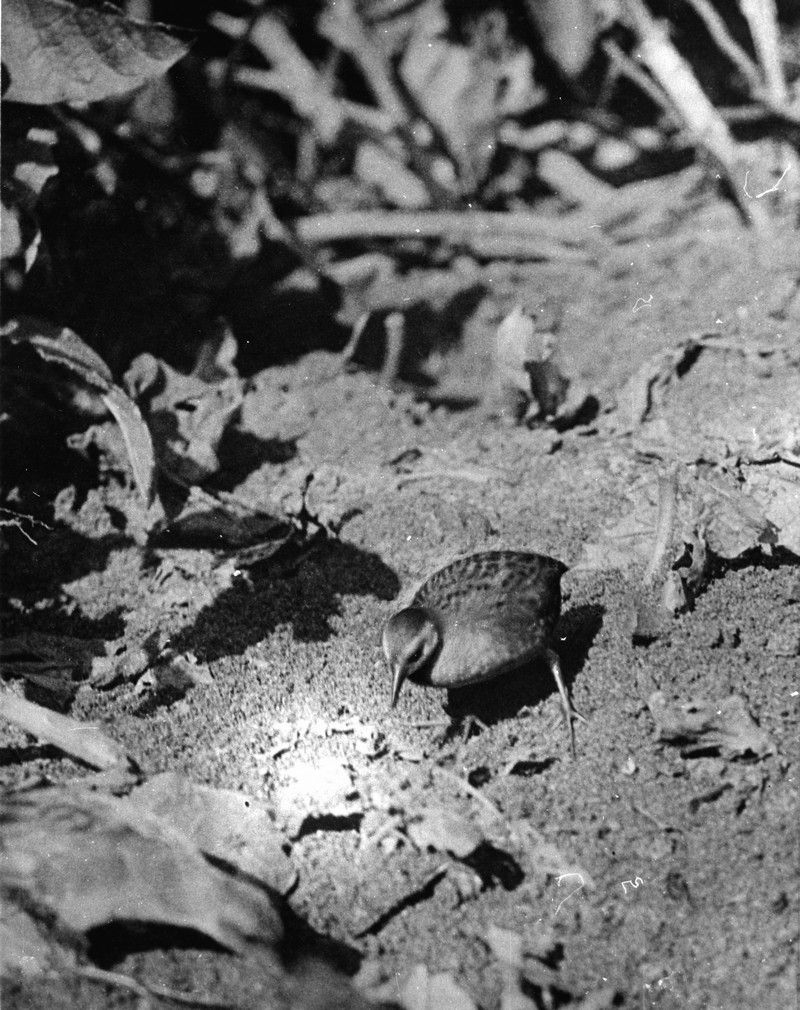In the last 150 years, the world has witnessed the tragic loss of numerous animal species due to various human and natural factors. This blog post highlights 23 such animals, offering a glimpse into their lives, habitats, and the circumstances that led to their extinction. Each story serves as a reminder of the delicate balance of our ecosystem and the urgent need for conservation efforts.
Passenger Pigeon
Once numbering in the billions, the passenger pigeon was a marvel of the North American skies. Sadly, relentless hunting and habitat destruction led to its extinction in the early 20th century. These pigeons were known for their massive flocks, sometimes stretching for miles, blocking out the sun.
Despite their once overwhelming numbers, they could not withstand human impact. The last known passenger pigeon died in captivity in 1914. This loss underscores the importance of sustainable practices. It serves as a poignant reminder of human influence over nature.
Tasmanian Tiger
The Tasmanian tiger, or thylacine, was a unique carnivorous marsupial native to Tasmania. Its dog-like appearance with distinctive stripes made it iconic. Unfortunately, excessive hunting, disease, and habitat loss led to its extinction by the 1930s.
Once perceived as a threat to livestock, it was heavily persecuted. The last known thylacine died in captivity in 1936. Today, the Tasmanian tiger is a symbol of the impact of human actions on wildlife. Conservation efforts now focus on preventing similar losses.
Reflecting on this extinction urges us to protect remaining biodiversity.
Japanese Sea Lion
The Japanese Sea Lion, once found along the coastal waters of Japan, was declared extinct in the 1970s. These marine mammals were heavily hunted for their oil, skin, and organs. In addition to hunting pressures, habitat destruction played a significant role in their decline.
Japanese Sea Lions were known for their playful behavior and social nature. They lived in colonies along rocky shores, where they basked in the sun and nurtured their pups. Conservation measures were too late to save them, but their story serves as a powerful reminder of the impact of human activity on wildlife.
Efforts to protect marine environments today are crucial to prevent similar extinctions. The Japanese Sea Lion’s fate underscores the need for international cooperation in conservation.
Great Auk
The great auk, a flightless bird once abundant in the North Atlantic, met its demise due to hunting and egg collection. Known for their distinctive black and white appearance, these birds were easy targets for hunters.
By the mid-19th century, the last known breeding pair was killed. Their extinction was driven by the demand for their feathers and meat. The great auk’s story is a stark reminder of the impacts of over-exploitation. It emphasizes the need for protective legislation for vulnerable species.
Their loss urges us to act swiftly to prevent further extinctions.
Bubal Hartebeest
The bubal hartebeest, a graceful antelope native to North Africa, was driven to extinction by the early 20th century. Overhunting and habitat loss were primary contributors to its decline.
Once roaming the African plains, their numbers dwindled due to excessive hunting for sport and meat. The last known individual died in the 1920s. The bubal hartebeest’s extinction warns against unsustainable hunting practices.
It also highlights the importance of protecting natural habitats. By learning from past mistakes, we can strive to safeguard the diversity of life on Earth.
Pinta Island Tortoise
The Pinta Island tortoise, represented by the famous Lonesome George, was native to the Galápagos Islands. Human activities and introduced species led to their demise.
Lonesome George, the last known individual, died in 2012. His passing marked the extinction of his subspecies. These tortoises were crucial for the Galápagos ecosystem, influencing vegetation patterns and seed dispersal.
Their loss has a lasting impact on the islands’ biodiversity. The story of the Pinta Island tortoise highlights the need for invasive species control and conservation initiatives.
Protecting habitats is essential for preserving unique species.
Yangtze River Dolphin
Also known as the baiji, the Yangtze River dolphin was native to China’s Yangtze River. Industrialization, pollution, and overfishing led to its functional extinction in the early 21st century.
Despite conservation efforts, the last confirmed sighting was in 2002. This dolphin’s decline reflects the environmental challenges facing freshwater species. Rapid industrialization and habitat degradation were insurmountable for the baiji.
Their extinction is a wake-up call for the conservation of riverine environments. Protecting these ecosystems is vital for the survival of numerous aquatic species. The baiji’s story urges immediate conservation action.
Pyrenean Ibex
The Pyrenean ibex, a subspecies of wild goat, roamed the Pyrenees mountains. Hunting and competition with domestic livestock led to its extinction by the early 2000s.
Efforts to clone the species resulted in a brief revival, but the clone died shortly after birth. This ibex’s extinction is a poignant example of the challenges faced by isolated populations.
Conservation strategies now emphasize the importance of genetic diversity and habitat protection. The Pyrenean ibex’s story underscores the need for innovative conservation techniques to prevent further losses.
Balancing human activities with wildlife protection is crucial.
West African Black Rhinoceros
The West African black rhinoceros was a critically endangered subspecies of the black rhino. Poaching for their horns drove them to extinction by the early 21st century.
Despite conservation efforts, the last confirmed sighting was in 2006. This rhino’s extinction highlights the urgent need for anti-poaching measures and wildlife protection.
Rhinos play a vital role in their ecosystems, influencing vegetation and supporting other species. Their loss has significant ecological consequences. The story of the West African black rhinoceros underscores the importance of combating illegal wildlife trade and preserving endangered species.
Javan Tiger
The Javan tiger, native to the Indonesian island of Java, went extinct in the mid-20th century. Habitat loss, hunting, and competition with humans drove its decline.
This tiger subspecies was known for its striking appearance and elusive nature. The last confirmed sighting was in the 1970s. Conservation efforts were too late to save this majestic predator.
The extinction of the Javan tiger emphasizes the need for proactive conservation and habitat preservation. Protecting large predators is crucial for maintaining ecological balance.
The Javan tiger’s story is a call to action for global wildlife conservation.
Tecopa Pupfish
The Tecopa pupfish inhabited the hot springs of California’s Mojave Desert. Habitat alteration and competition led to its extinction by the 1980s.
These small fish were uniquely adapted to their desert environment. Human development and changes to water flow disrupted their habitat, sealing their fate.
The extinction of the Tecopa pupfish highlights the fragility of desert ecosystems. It underscores the importance of protecting unique habitats from human interference.
Conservation efforts now focus on preserving the delicate balance of desert environments. The Tecopa pupfish’s story serves as a reminder of the impacts of habitat loss.
Spix’s Macaw
The Spix’s macaw, a stunning blue parrot, was native to Brazil. Habitat destruction and illegal trapping for the pet trade led to its extinction in the wild by the early 2000s.
Efforts to reintroduce captive individuals into the wild continue, but challenges remain. This macaw’s decline reflects the broader threats facing tropical birds.
Protecting rainforests and regulating the pet trade are essential for their survival. The story of the Spix’s macaw inspires hope that conservation efforts can lead to recovery. It emphasizes the need for international cooperation in wildlife protection.
Guam Kingfisher
The Guam kingfisher was a brightly colored bird native to the island of Guam. Habitat destruction and predation by invasive species led to its extinction in the wild by the late 20th century.
Captive breeding programs aim to reintroduce the bird to its natural habitat, but challenges persist. The decline of the Guam kingfisher underscores the impacts of invasive species on island ecosystems.
Conservation efforts focus on habitat restoration and controlling invasive predators. The story of the Guam kingfisher highlights the need for comprehensive conservation strategies.
Protecting island biodiversity is crucial for global wildlife preservation.
Ivory-Billed Woodpecker
The ivory-billed woodpecker, once native to the southern United States, was driven to extinction due to logging and habitat loss. Known for its striking black and white plumage, this woodpecker was a majestic sight.
The last confirmed sighting was in the mid-20th century, though unverified reports persist. Their decline highlights the fragility of wetland ecosystems.
Conservation efforts now focus on protecting remaining habitats and preventing further loss. The story of the ivory-billed woodpecker serves as a warning of the consequences of unchecked development.
Preserving wetlands is vital for biodiversity.
Quagga
The quagga, a subspecies of zebra, was native to South Africa. Overhunting and habitat loss led to its extinction by the late 19th century.
Characterized by its unique striping pattern, the quagga was once plentiful in the African plains. The last known individual died in captivity in 1883.
Efforts to bring back the quagga through selective breeding are underway. This extinction highlights the impacts of human activity on wildlife populations.
The quagga’s story emphasizes the importance of sustainable practices and habitat conservation. Learning from the past can guide efforts to protect vulnerable species.
Atitlán Grebe
The Atitlán grebe, a flightless bird from Lake Atitlán in Guatemala, went extinct in the late 20th century. Habitat destruction and competition with introduced species were primary causes.
Efforts to protect their environment came too late for this unique bird. Their extinction demonstrates the vulnerability of isolated populations.
Conservation now focuses on preventing habitat degradation and the introduction of non-native species. The Atitlán grebe’s story highlights the importance of proactive environmental protection.
Safeguarding isolated ecosystems is crucial for preserving global biodiversity.
Steller’s Sea Cow
The Steller’s sea cow, a large marine mammal, was driven to extinction within 27 years of its discovery in the 18th century. Overhunting by humans was the primary cause.
These gentle giants were found in the cold waters of the Bering Sea. Their slow reproduction and lack of fear of humans made them easy targets.
The rapid extinction of Steller’s sea cow highlights the consequences of unsustainable exploitation. It underscores the need for responsible wildlife management.
Learning from history can help prevent similar losses in the future. Protecting marine life is essential for ocean health.
Golden Toad
The golden toad was native to the cloud forests of Costa Rica. Climate change and habitat loss led to its extinction by the late 20th century.
These toads were known for their vibrant color and elusive nature. Despite conservation efforts, they disappeared rapidly.
The extinction of the golden toad serves as a stark reminder of the impacts of climate change on biodiversity. Protecting cloud forests and mitigating climate change are crucial for species survival.
The story of the golden toad emphasizes the urgency of global conservation efforts. Protecting fragile ecosystems is essential for future generations.
Heath Hen
The heath hen, a subspecies of the greater prairie chicken, was native to the eastern United States. Habitat loss and overhunting drove it to extinction by the early 20th century.
Once common, their numbers dwindled rapidly. The last known individual died in 1932. Conservation efforts came too late to save this unique bird.
The story of the heath hen highlights the importance of early intervention and habitat protection. Preserving grasslands and regulating hunting are essential for species conservation.
Learning from the past can guide current efforts to protect vulnerable populations.
Poo-uli
The Poo-uli, a small bird native to Hawaii, was driven to extinction by habitat loss and invasive species. Despite conservation efforts, the last known individual died in captivity in 2004.
This bird’s decline underscores the impacts of introduced predators and habitat destruction. Preserving Hawaii’s unique ecosystems is crucial for preventing further losses.
Conservation strategies now focus on habitat restoration and invasive species control. The story of the Poo-uli emphasizes the need for comprehensive conservation plans.
Protecting island biodiversity is essential for preserving global wildlife diversity.
Eastern Cougar
The eastern cougar, once roaming the forests of North America, was declared extinct in the early 21st century due to habitat loss and hunting.
These majestic predators were known for their elusive nature and adaptability. Despite reports of sightings, none have been confirmed.
The extinction of the eastern cougar highlights the need for habitat conservation and wildlife corridors. Protecting large predators is vital for maintaining ecological balance.
The story of the eastern cougar serves as a reminder of the impacts of human activity on wildlife populations. Preserving natural habitats is crucial.
Laysan Rail
The Laysan rail, a flightless bird native to the Hawaiian islands, was driven to extinction by habitat destruction and predation by invasive species.
These small birds were once common on Laysan Island. The last confirmed sighting was in the early 20th century. Their extinction underscores the fragility of island ecosystems.
Conservation efforts now focus on protecting remaining native species and restoring habitats. The story of the Laysan rail highlights the importance of preventing the introduction of non-native species.
Preserving island biodiversity is crucial for global wildlife conservation.
